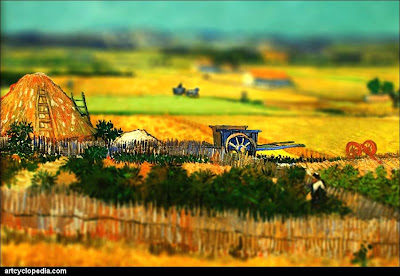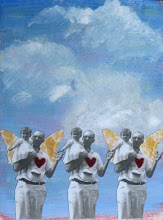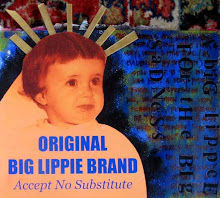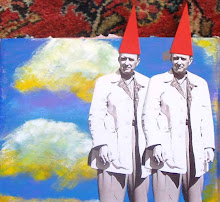
So I went to the MFA to fall on my knees before this painting and worship it as any true disciple of Vincent would and I have to say I was just as thrilled with it as I had hoped I would be, and may have even been a bit more excited than I had anticipated (if that's even possible). I took my time heading into the Impressionist gallery, stopping in the hallway just outside it to snap a few photos of a Constable I thought I might like to try my hand at emulating. I wanted to take my time: to savor the moment of that first fleeting view; of seeing a Vincent that I had never seen before. When I got into the room and saw The Sower in the distance, my heart skipped a beat. Several, in fact. There it was in the far corner, hung with Millet's sower that Vincent loved so much. And I was instantly startled by two things: its size and its palette.
The work was much smaller than I had anticipated. I'm not sure why I thought it was bigger than it is, but there you have it. It was small. Intimately and accessibly small. And while I have seen endless photo reproductions of the many versions Vincent painted of The Sower, especially many photos of this particular piece, I now know that not one of them even remotely captured the true life colors Vincent used in creating this tiny masterpiece. Holy cow! A lime green sky, pink clouds, cornflower blue fields, little slashes of vivid cerulean and of course Vincent's beloved yellow. I couldn't tear myself away from it. I tried, but I couldn't. I moved aside every few minutes to let others get a look, only to step back before it the moment they walked away. I committed every brushstroke and every nuance to memory. I took endless photos of it from various angles (and wished I was at least a foot taller to see it eye to eye on the gallery wall). And then when David had asked me to move on for the umpteenth time, I did so grudgingly, but only briefly, as only a few short minutes later I found myself back in front of The Sower once again.
And then it was time to go. I had given much thought to seeing this work, to experiencing this work as completely as I could. I had thought about the time I would spend with it and how I wanted to be sure I stayed calm so as to remember every last detail of the piece and the precious time I spent with it. What I didn't think about at all was the act of walking away from it. Of leaving it once and for all, knowing that in all likelihood I would never, ever see this painting again in my lifetime and knowing that it would be on its return trip to Europe just hours after I walked out of that gallery. It was incredibly difficult to do and I was utterly surprised by how much trouble I had saying goodbye to it, though given my absolute adoration of Vincent, how this could have been a surprise is beyond me.
But leave I finally did. I was joyful at having had the opportunity to experience a Vincent painting I had never before seen, yet sad that this experience was over. I was left with both a sense of the surreal at having been in its presence and a bit melancholy too at how quickly it was over. I think Vincent would more than understand.
Photo of The Sower was taken by me in the Impressionist Gallery at the MFA Boston. While the angle is odd due to the height it was hung at and my rather short staure, I think it is a bit more accurate a representation of the brushwork and pigments used by Vincent than most generic photo reproductions of this piece found online or in books.














.jpg)







































